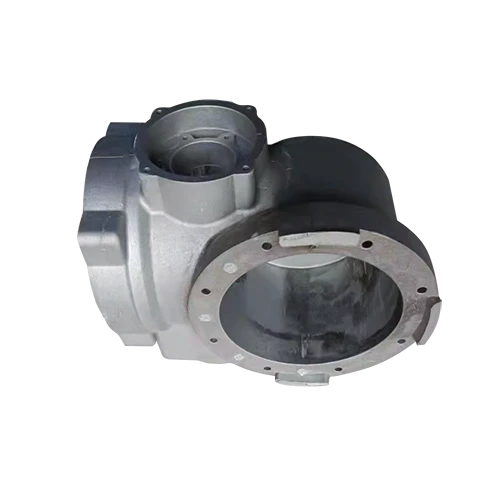Mobile:+86-311-808-126-83
Email:info@ydcastings.com
Connecting Trash Pumps with Essential Accessories for Optimal Performance
Understanding Trash Pump Connectors A Comprehensive Guide
In the world of construction and maintenance, efficiency is key, especially when it comes to managing water removal and handling debris. Trash pumps are essential tools in this domain, specifically designed to manage liquids containing solids. However, one element that often goes unnoticed but is crucial for the effective operation of trash pumps is the connectors used. This article aims to provide an in-depth understanding of trash pump connectors, their types, significance, and best practices when utilizing them.
What is a Trash Pump?
Before delving into connectors, it’s crucial to understand what a trash pump is. Trash pumps are designed to move large volumes of fluids with suspended debris, such as leaves, mud, and stones. They are commonly used in construction sites, emergency flood relief efforts, and any scenario where water needs to be removed quickly and efficiently.
The Importance of Connectors
Connectors are pivotal in ensuring that trash pumps function effectively. They facilitate the connection between the pump and hoses or piping systems, enabling smooth fluid transfer. The right connectors can help minimize leaks, ensure better suction, and improve overall operational efficiency. Poor quality or insufficient connectors can lead to disruptions in work, increased wear on equipment, and even potential damage to the pump itself.
Types of Trash Pump Connectors
There are several types of connectors used with trash pumps, each serving different purposes and compatible with various hose sizes. Here’s a breakdown of some commonly used connectors
1. Camlock Connectors These connectors are popular in industrial applications due to their ease of use and reliability. Camlock fittings allow for quick connections and disconnections of hoses, making them ideal for temporary setups and emergency situations.
2. Threaded Connectors Available in various sizes and materials, threaded connectors are durable and provide a tight seal necessary for preventing leaks. They are often used for permanent installations or systems where hoses are not frequently disconnected.
3. Barbed Connectors These are used primarily for flexible hoses. Barbed connectors are pushed into the hose and often secured with clamps. They are simple and cost-effective but may require careful installation to prevent leaks.
4. Flanged Connectors Flanged connectors are typically used in larger industrial applications. They provide a robust connection and are designed for high-pressure systems. Flanged fittings allow for easy cleaning and inspection.
5. Quick Disconnects As the name implies, these connectors allow for rapid connection and disconnection of hoses. They are incredibly useful in situations where equipment needs to be moved quickly, decreasing downtime.
Choosing the Right Connector
trash pump connectors

When selecting connectors for a trash pump, several factors need to be considered
- Compatibility Make sure the connector matches the size and type of hose you're using. The diameter and thread type must align correctly to ensure a secure fit.
- Material The materials used for connectors can affect their longevity and performance. Popular choices include plastic, aluminum, and stainless steel, each offering different benefits in terms of durability and corrosion resistance.
- Application Consider the specific application and environment. Some connectors are better suited for high-pressure situations, while others might be ideal for basic water transfer with minimal debris.
- Ease of Use If the pump and connectors will be frequently connected and disconnected, prioritizing ease of use can save time and increase overall productivity.
Best Practices for Maintenance
To maximize the lifespan and efficiency of your trash pump connectors
- Regular Inspections Frequently check connectors for wear and tear. Replace any damaged or worn components promptly to avoid larger issues.
- Secure Connections Always ensure that fittings are tightly secured to prevent leaks during operation. A loose connection can lead to air pockets and reduced pump efficiency.
- Clean Components After use, clean connectors and hoses to remove debris and prevent build-up that could interfere with future operations.
- Store Properly Ensure all connectors are stored in a clean, dry place to prevent corrosion and damage.
Conclusion
Trash pump connectors are a vital component in water removal operations, and understanding their types, uses, and maintenance can greatly enhance efficiency and effectiveness on the job site. By choosing the right connectors and adhering to best practices, operators can ensure that their trash pumping systems run smoothly and effectively, no matter the challenges they face.
-
Why Should You Invest in Superior Pump Castings for Your Equipment?NewsJun.09,2025
-
Unlock Performance Potential with Stainless Impellers and Aluminum End CapsNewsJun.09,2025
-
Revolutionize Your Machinery with Superior Cast Iron and Aluminum ComponentsNewsJun.09,2025
-
Revolutionize Fluid Dynamics with Premium Pump ComponentsNewsJun.09,2025
-
Optimizing Industrial Systems with Essential Valve ComponentsNewsJun.09,2025
-
Elevate Grid Efficiency with High-Precision Power CastingsNewsJun.09,2025











